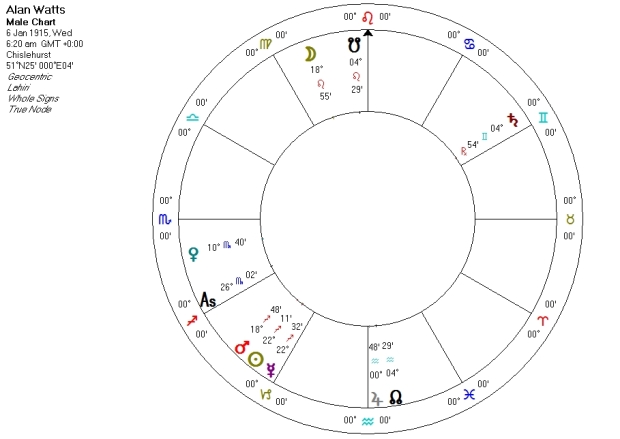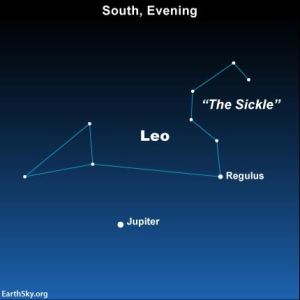VISUAL ASTROLOGY is a great experience. With a little study, any astrologer should be able to relatively accurately know the (tropical) Moon sign just by knowing the date and how much of the Moon is visible. The planets are extremely easy to see in the night sky, and April is a fantastic month to do this (see April 2016 guide to the 5 bright planets ).
Ideally, it is best to learn to recognize all the zodiacal constellations which then become a street map to the night sky. Start with Scorpio, Leo, Gemini and Spica (for Virgo). Sagittarius the teapot sitting in the Milky Way is also easy to learn to recognize. Libra is dead easy with its two bright stars situated between Spica and Scorpio. Taurus “the Christmas tree” will never be forgotten once viewed. The Christmas tree is actually the triangular face of the bull.
If you live in a city or light pollution dims the night sky, wait until your next country trip and take the time to learn a new zodiacal constellation. One new constellation per evening or trip is a good way to progress with your learning. With apps like SkEye it’s a no brainer. Once you can recognize all the 12 zodiacal constellations without referring to an app or book, you have graduated to being a visual astrologer.
You will not be able to see the constellations of Cancer, Aquarius or Pisces in built up areas and even in the country, these constellations are difficult to see if the Moon is up. Cancer is shy, so to see its core Beehive structure, you can only see it out of the corner of your eye but the ‘propeller’ is visible. Aquarius is remarkable as it is the only zodiacal constellation showing movement – the water pouring out of the jar and the ripples in the pond. Pisces is the best of all as it is extremely large, has two distinct arms with a ring at the end of one arm. What is so notable about Pisces is that each star is equally faint and forms a gossamer thread. Aries is a non-event and found hanging off one arm of Pisces.
Recognizing that the zodiacal constellations are symbolic of the sidereal zodiac, the presence of the Moon or planet in a zodiacal constellation can be converted back to the tropical sign relatively easily. As a rule of thumb, if the Moon or planet is located in the constellation of Leo (which is currently the case with Jupiter), just add one sign to arrive at its tropical sign (unless the Moon or planet is close to the beginning the constellation). The exact difference between the two zodiacs is currently 24 degrees with the tropical zodiac 24 degrees ahead of the sidereal zodiac.
There is an element of inexactness or vagueness when in visual astrologer mode compared to astrological software or ephemeris mode but this is part of the process. I remember going out one evening and looking at the constellation of Scorpio, a truly stunning constellation with the red star Antares at its heart, and I notices there was a star out of place. Of course, stars are never out of place. I quickly realized that Saturn was in the early part of tropical Sagittarius which placed it in the constellation of Scorpio. This type of experience happens a number of times. Once you start noticing a misplaced star in a constellation, you have advanced to a higher level of visual astrology.
When you look at the zodiacal constellations, there is something hidden that you are looking at that. You are looking at the intellectual property (IP) of ancient astronomer-astrologers that defined these zodiacal constellations over 4,000 years ago. Some were defined thousands of years earlier. Why are there 12 zodiacal constellations and why are they arranged the way they are? This is a controversial subject because the IP of the zodiacal constellations stretches back before the written word. Whether by accident or intentional, these zodiacal constellations accurately symbolically represent the astrological ages if viewed by the heliacal rising method ). It seems incredible that astrologers thousands of years ago seemed to have accurately define the zodiacal constellations to represent the passing panorama of the astrological ages. Did they do this accidentally or with intent?
Whenever I look at the zodiacal constellations, I can feel the ancient astrologers in my bones and empathize with their intent.
So also astrology, as it becomes concerned with predicting the future, becomes entirely insensitive to the actual heavens to such an extent that most astrologers are so pre-occupied with ephemeris tables that they hardly look at the stars…”
Alan Watts, “CLOUD-HIDDEN – Whereabouts Unknown – A Mountain Journal”, Vintage Books, New York, 1973
Alan Wilson Watts (6 January 1915 – 16 November 1973) was a British-born American philosopher, writer, and speaker, best known as an interpreter and popularizer of Eastern philosophy for a Western audience. Born in Chislehurst, England, he moved to the United States in 1938 and began Zen training in New York. In 1950 he moved to California, where he joined the faculty of the American Academy of Asian Studies.
Watts gained a large following in the San Francisco Bay Area while working as a volunteer programmer at KPFA, a Pacifica Radio station in Berkeley. Watts wrote more than 25 books and articles on subjects important to Eastern and Western religion, introducing the then-burgeoning youth culture to The Way of Zen (1957), one of the first bestselling books on Buddhism. He also explored human consciousness, in the essay “The New Alchemy” (1958), and in the book The Joyous Cosmology (1962).

Alan’s Vedic chart has the sidereal sign of Scorpio rising with its ruler, Mars placed in the 2nd house of writers (unlike western astrology which is the 3rd house). The sun, ruler of the 10th house of fame is conjunct Mars propelling Alan into the land of famous people. This is consolidated with the Moon also in the 10th house (the Moon is equal in importance to the ruling planet in Vedic) and the Moon rules the best house in the Vedic horoscope – the 9th house. Whenever the 9th and 10th houses are connected this is considered a raja yoga bring great benefits to the person.
Rahu (the Moon’s north node) is conjunct Jupiter indicating an ‘aggressive’ desire to write philosophical-spiritual books. With Jupiter in his 4th house of home, he moved from the UK to the USA and this is accentuated by Venus, the ruler of the 7th house of living in a foreign country) located in the all-important 1st house.
Ketu (the Moon’s south node) situated in the 10th house is considered a spiritual influence. This is compounded by Venus in the 1st house ruling the 12th house of people who quest for enlightenment or spiritual insights. Saturn is the only planet retrograde indicating that he rose to his real career later in life. Unfortunately Saturn does harm to his 8th house of life and death compounded by the 8th house ruler, Mercury, being conjunct his ruling planet Mars. Alan died at only 58 years around his second Saturn Return with natal Saturn in his 8th house of death.

Reblogged this on Lost Dudeist Astrology.
LikeLike